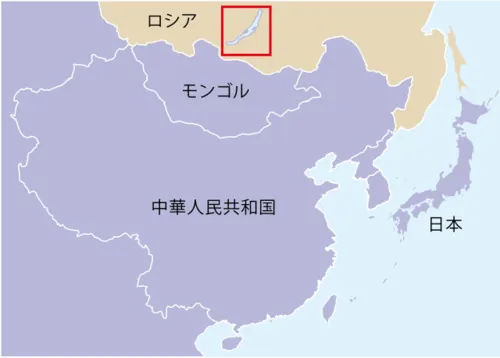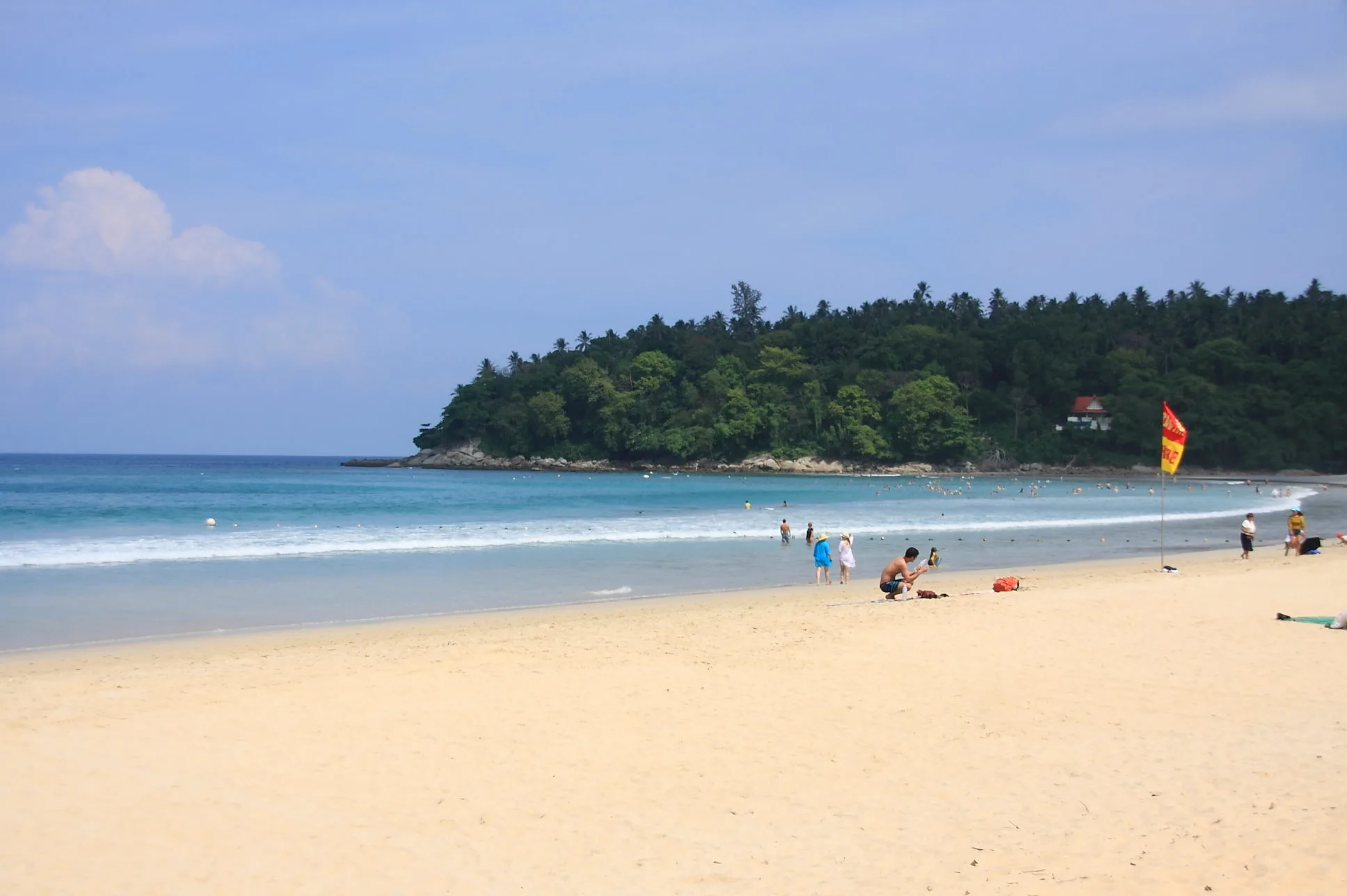Surprisingly few countries see the first sunrise of the year - The arrival of sunlight in Japan is connected to the sun worshiping Amaterasu Omikami
2024-01-02
Category:Japanese culture I'm participating in the ranking.Please click and cheer for me.
There are surprisingly few countries where you can see the first sunrise of the year.
When I looked into how many countries have the custom of watching the first sunrise of the year, I found that it was fewer than I expected, with countries such as Mongolia, South Korea, Russia, the United States, and Canada mentioned. It is said that Russia, the United States, Canada, and other countries have a culture that spread from the Arctic Circle, so it is a so-called Inuit culture. There is a connection because the Inuit are said to be Mongoloids.
Scattered among ethnic groups around China?
It is unclear why this custom spread to Korea, but the prevailing theory is that Japan's ethnic roots are Mongoloid or Caucasian, and I have seen the genetic theory of Lake Baikal. Although Lake Baikal is now part of Russia, it is thought that Mongoloid people lived at that time as well, and Kyrgyz folklore says that it was the Japanese who moved east and the Kyrgyz who moved west. . Even Japanese people are surprised at how similar Kyrgyz people are to Japanese people.
Japan has sun worship
In Japan in particular, the first sunrise is also called goraiko and is considered a blessing, as it is associated with ancient Japanese beliefs. Japan's national flag is the Japanese flag and the sun. The Rising Sun Flag also has a deformed sun design to make it stand out. What does this originate from? It is a belief in the sun, which is a belief in nature. In other words, Amaterasu Omikami. Amaterasu Omikami, said to be the origin of the imperial lineage, is enshrined at Ise Grand Shrine, and there are many shrines dedicated to Amaterasu Omikami in various places. Currently, there is a debate about male-lineal succession, but if you trace the paternal lineage, you will reach the first emperor, Emperor Jimmu, and in fact, in mythology, you will reach Amaterasu Omikami. This has been the legitimate imperial line in Japan since the beginning of recorded history.
Read it together
South Korea, which tries to equate the Rising Sun flag with Hakenkreuz, is completely unaware of its history and meaning.
Japan's national anthem, ``Kimigayo,'' is based on an unknown tanka that was published in the Kokin Wakashu of the Heian period. It's a song whose author is unknown. In the Kokin Wakashu, it says, ``My lord will ripple through a thousand and eight thousand generations until he becomes a rock of stone and becomes a child of moss.'' Who this ``my lord'' refers to is a hot topic, but the original meaning of this poem is ``You... It means "May you live a long and healthy life forever."
This song has been sung during birthdays, weddings, and celebrations of life milestones throughout Japan's long history. After the Meiji Restoration, it was put to music and performed as a song wishing for the long life of the Emperor. In other words, this era was the song of the Meiji Restoration. After that, Japan entered the war, and some forces denounce this as a symbol of militarism, but it only describes Japan for a short period of time in its long history.
A similar story can be said about the Rising Sun flag. There are various theories about the design of the Rising Sun flag, but one theory is that it is a legend that Amaterasu Omikami, the sun god, came out of a rock and the sun returned to this world. The legend of Iwato dates back to the time of the first Emperor Jinmu. In this way, the rising sun pattern has been used for various celebrations since ancient times in Japan, and when Japan entered World War II, it was adopted as the flag of the Japanese military. In other words, it is merely an explanation of Japan for a short period of time.
Considering this timeline, the Hakenkreuz was first the party flag of the Nazi Party, which then became the national flag. The reason why the swastika was adopted as the flag of the Nazi Party is that the swastika, which was painted on the ruins of Troy, was thought to be a symbol of the Aryan race and was adopted.
In other words, the national symbol associated with the idea of a chosen people coincided with the thinking of the Nazi Party, which advocated the principle of Germanic first, and became a symbol of the genocide of the Jews. In other words, this flag was adopted based on the consistent ideology of the chosen people.
Please tell Professor Seo Kyung-deok, who has never studied history, a little bit.
Japanese education that does not teach Japanese culture
The reason that many Japanese people raise the national flag and sing the national anthem without learning anything about the history of the national flag and the Emperor (Imperial lineage), which are considered symbols of Japan, is a problem of education. Why aren't these basic things taught in elementary school? Taking up the Amanoiwato myth, the imperial lineage is written from Amaterasu Omikami, the sun god, and the sun is depicted on the Japanese flag. It's that simple.
Japanese people go to shrines during the New Year
The prohibition on religious education under the Constitution only prohibits propagating or excluding a specific religion, recommending conversion to any religion, or denying religion itself. There is no problem if you explain the customs and culture of the beginning of the year, such as Christmas, New Year's Eve bell, and the first sunrise of the year. At least many Japanese people enjoy Christmas, listen to New Year's Eve bells on New Year's Eve, and visit shrines on New Year's Day.
I'm participating in the ranking.Please click and cheer for me.
The only one in the world? Japan eats raw eggs. Why are raw eggs safe in Japan? Egg rice is a soul food in Japan.
Japan seems to be the only country in the world that eats raw eggs. Japan is known as a country where tap water is drinkable, but you might think it's a similar story, but it's not. In Japan, tap water is drinkable because it is soft and sanitary water is thoroughly controlled, and eggs are only born from chickens, so there is no difference in countries around the world.
Even if you explain it as a food culture, eggs are probably eaten all over the world, so why did Japan come to eat eggs raw? You might think it's a matter of Japanese tastes, but foreigners say that sukiyaki is delicious, and even simple rice with egg is delicious. Could it be that only Japanese people noticed the taste of raw eggs?
If you ask foreigners, they will tell you that raw eggs are dangerous. Then, I wondered why Japanese eggs were so safe, and when I looked into it, I found out that Salmonella bacteria is contained in the parent hens' feces and urine and seems to penetrate through the egg shells. Alternatively, if the parent chicken is infected with Salmonella, eggs infected with Salmonella will be born. Current Japanese poultry farms take thorough measures to prevent Salmonella, which is why they can even be eaten as raw eggs.
Then, when did Japan start eating raw eggs? When I researched it, I found that before the Edo period, food derived from animals was avoided due to the influence of Buddhism, and there seems to be a mention of raw eggs in the Edo period. Later, there was a mention of tamago kakigohan (egg-dried rice) in the Meiji period, and it is said that Ogai Mori also liked eating it.
When I researched Salmonella, I discovered that it was named after Daniel Salmon, a bacteriologist who discovered the type strain of the Salmonella genus, Hog cholera, in the United States in 1885. It became. In the Edo period, there would have been no recognition of Salmonella.
In summary, Japanese people did not have any biological knowledge about Salmonella, but they did know that if parent chickens were kept in an unsanitary environment, the baby eggs would have fatal problems if eaten by humans. On the other hand, they knew that if they thoroughly managed and cleaned the chickens, this problem would not occur.
What is the origin of the name Zero Fighter? The concept of imperial history was eliminated and it was excluded from school education.
Zero is the best fighter plane in the world
Zero Fighter adopted in 2600 of the Imperial Era
Where did the concept of imperial history disappear?
The concept of Japanese imperial history
Lost Imperial Era
The imperial period is the very history of Japan
The world's best fighter plane, the former Japanese military's pride, is the Zero Fighter. The Zero fighter is a carrier-based fighter that was adopted by the Japanese Navy in 1940. The aircraft boasted the world's lightest weight, and above all, the pilot's proficiency is said to have been at the highest level at the time of the attack on Pearl Harbor.
The number 0 in Zero Fighter comes from the last two digits of 00 in the year 2600 of the Imperial era. This is a surprisingly unknown fact. In history classes at school, we learn about kamikaze attacks and the Zero Fighter, but I don't remember ever hearing the concept of the imperial era.I wonder what that means.
In fact, many Japanese people don't even know the concept of the imperial period. If that's the case, there's no reason why the 0 in Zero Fighter has any meaning. It's very strange. The Koki is Japan's unique calendar that starts from the year in which the first emperor, Emperor Jimmu, ascended the throne.
This year is the 2682nd year of the Imperial Era, so it is simple and clear that it has been 82 years since the Type 0 fighter was adopted. That would be 2682 years after Japan worshiped the Emperor and demonstrated its national polity. This shows the number of years that Japan is considered to be the longest-lasting country in the world.
It's a mystery why they stopped using the concept of imperial history at all. When I looked into it, I found that there was no scientific basis for it, such as whether Emperor Jinmu actually existed, or whether February 11th (Koki New Year) was really the founding day of Japan.
And it seems that due to GHQ's wishes, the National Foundation Day itself has been abolished. So what exactly is Western history based on the birth of Jesus Christ?
Japan is the longest-lasting nation in world history. Its history and culture have been formed within the framework of the nation that has been inherited. The most straightforward time scale for Japan's long history and culture can be said to be the imperial period.
Although the concept of era name remains, there is no concept of imperial period. This is not to say that history textbooks and all Western calendar notations should be replaced with the Imperial Period. At the very least, we should recognize that Japan's history is long and that Japanese children were born into it, and that we have some role to play in inheriting it, and that we should be proud of it. The revival of is important.
Have tattoos been common among Japanese people since ancient times? When did the current tattoo culture disappear? fashion?
You may hear people say that Japan does not have a culture of tattooing, but tattooing is actually an ancient Japanese culture. In Gishi Wajinden, it is written that Wa people liked tattoos, and both men and women had tattoos on their faces and all over their bodies. People in China and the peninsula don't have tattoos. It is said that these things are not done due to Confucianism. This is not a recommendation. People who don't want to don't have to.
Many cultures were introduced to Japan from southern China, and there were people living in what is now Southeast Asia in the southern part. The method of preserving fish in vinegared rice, which is the origin of sushi, is said to have come from Southeast Asia, where tattoos are common. Sake is said to have originated from southern China's Shaoxing wine, which was originally made from sake-brewing technology that was brought to Japan. Northern China has a field farming culture, and southern China has a rice farming culture.
Tattoos began to be banned in Japan due to the influence of Confucianism. Even so, Toyama Kinshiro Kagemoto of Toyama Kin-san had a tattoo. Even judges had tattoos back then. It is said that tattoos were completely banned after the Meiji Restoration. The reason is for westernization. Even in the West, some people got tattoos, but they were only one-point tattoos, and they were not tattoos that covered the entire body like in Japan at the time. Amid these regulations, Japan's tattoo culture was inherited by the world of chivalry.
Due to this background, tattoos came to be considered anti-social forces. This is now called Japanese culture. Furthermore, in Japan, the anti-organized crime law was enacted in 1992, placing significant restrictions on the activities of anti-social forces in general society, and these groups are currently on the decline, with public baths now being sought after in the city. You no longer see people who were once members of organized crime groups.
Young people in Japan now have tattoos as a fashion item. In other words, they seem to be trying to create their own individuality by drawing something on their bodies, just like the Japanese of old. The pattern is a so-called tattoo that looks good on clothes. Tourists coming from foreign countries are told that if they have a tattoo, they won't be able to go to the traditional Japanese hot springs that they were looking forward to, so they wrap them in some kind of cloth to hide it, but they are told that the cloth is also bad. It seems that there are cases where the application is refused. On the contrary, it is said that young Japanese people with tattoos cannot go to hot springs, which is a part of Japanese culture.
You may be wondering what I'm trying to say, but Japanese people need to protect the culture of public baths, which is unique to Japan, in a healthy manner. Nowadays, it seems that men who are women at heart are thinking about how to bathe women.
South Korea, which tries to equate the Rising Sun flag with Hakenkreuz, is completely unaware of its history and meaning.
Japan's national anthem, ``Kimigayo,'' is based on an unknown tanka that was published in the Kokin Wakashu of the Heian period. It's a song whose author is unknown. In the Kokin Wakashu, it says, ``My lord will ripple through a thousand and eight thousand generations until he becomes a rock of stone and becomes a child of moss.'' Who this ``my lord'' refers to is a hot topic, but the original meaning of this poem is ``You... It means "May you live a long and healthy life forever."
This song has been sung during birthdays, weddings, and celebrations of life milestones throughout Japan's long history. After the Meiji Restoration, it was put to music and performed as a song wishing for the long life of the Emperor. In other words, this era was the song of the Meiji Restoration. After that, Japan entered the war, and some forces denounce this as a symbol of militarism, but it only describes Japan for a short period of time in its long history.
A similar story can be said about the Rising Sun flag. There are various theories about the design of the Rising Sun flag, but one theory is that it is a legend that Amaterasu Omikami, the sun god, came out of a rock and the sun returned to this world. The legend of Iwato dates back to the time of the first Emperor Jinmu. In this way, the rising sun pattern has been used for various celebrations since ancient times in Japan, and when Japan entered World War II, it was adopted as the flag of the Japanese military. In other words, it is merely an explanation of Japan for a short period of time.
Considering this timeline, the Hakenkreuz was first the party flag of the Nazi Party, which then became the national flag. The reason why the swastika was adopted as the flag of the Nazi Party is that the swastika, which was painted on the ruins of Troy, was thought to be a symbol of the Aryan race and was adopted.
In other words, the national symbol associated with the idea of a chosen people coincided with the thinking of the Nazi Party, which advocated the principle of Germanic first, and became a symbol of the genocide of the Jews. In other words, this flag was adopted based on the consistent ideology of the chosen people.
Please tell Professor Seo Kyung-deok, who has never studied history, a little bit.
Japanese industrial machinery Most Korean manufacturing industrial machinery is made in Japan.Industrial robots are called the world's Big Four: FANUC (Japan), Yasukawa Electric (Japan), KUKA (Germany), and ABB (Switzerland).Kawasaki Heavy Industries (Japan) and Fujikoshi (Japan) are included in the top six.Of course, modern products are made by machines.Machines are also needed to make machines.


